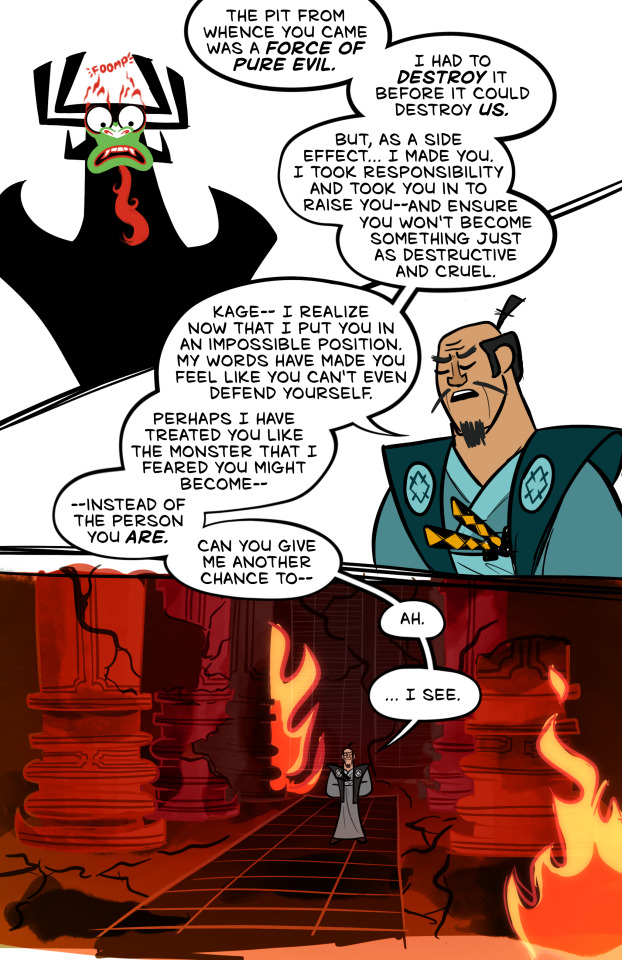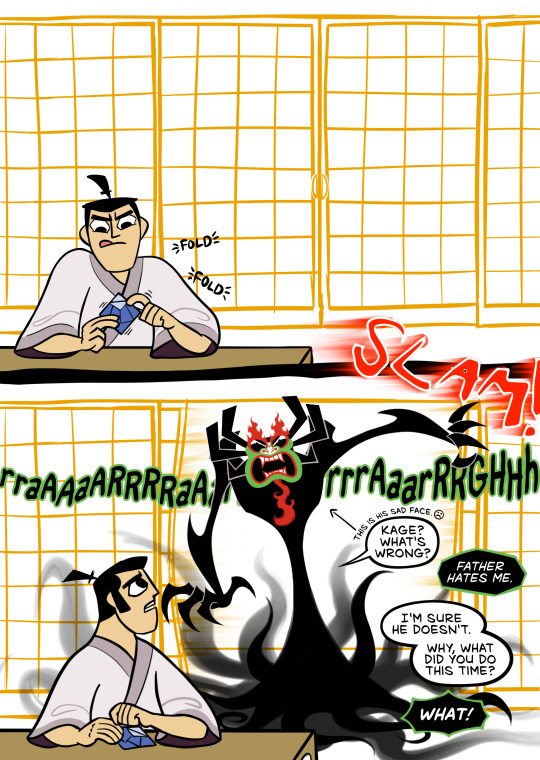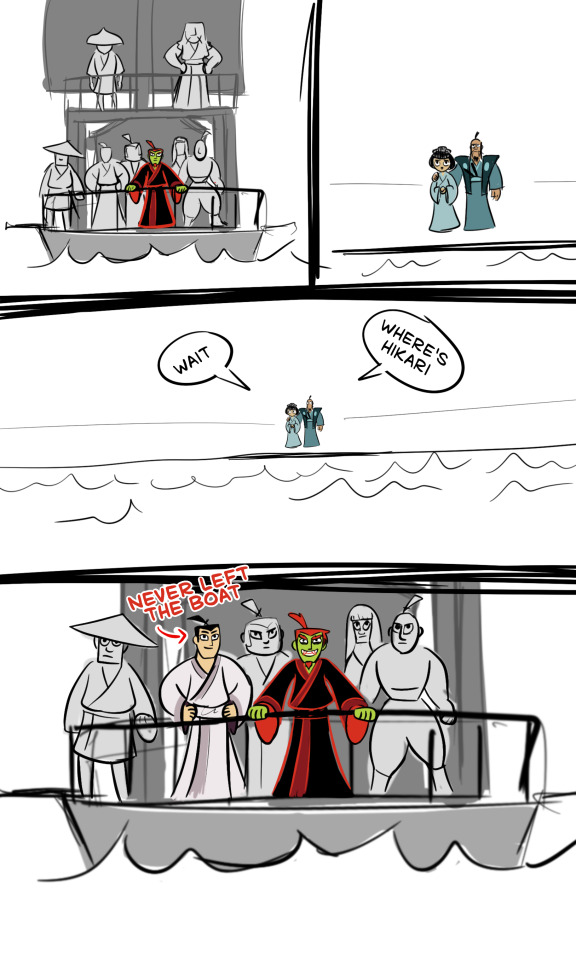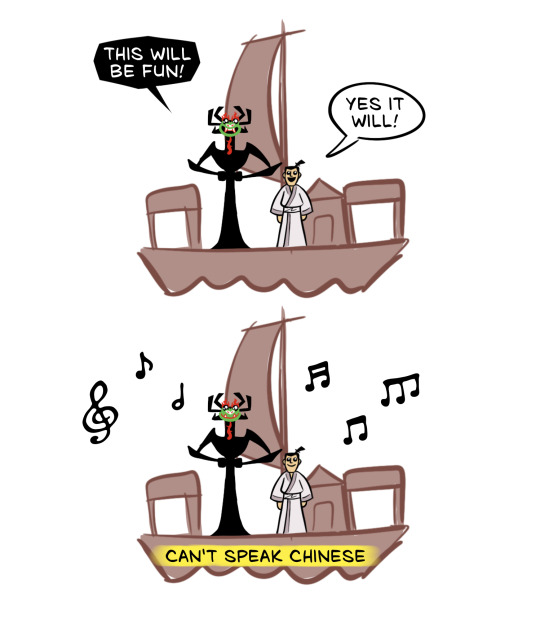#some references to some classic poems in this
Explore tagged Tumblr posts
Text
Retired Assets Rambling… Thoughts about writing in my second language.
TLDR: Chinese classical literature influenced my writing, but I found it easier to articulate complex emotions in English.

So. I am a native speaker of Mandarin, and I learned English as a second language. I’ve been living in English-speaking countries longer than I have in China. Once I became proficient around age 14/15, I started thinking and dreaming in English, and speaking takes only a bit of effort, never too much. Still, when I’m tired or just awake, speaking English feels a bit unnatural to me. Speaking English in those situations is like… playing an instrument as a concert musician. Much is muscle memory, but it still takes effort and some thought. If I trip on a rock, I only exclaim in Chinese.
Recently, I’ve been discussing RA with my beta, who’s multiracial (native speaker of English, not of Chinese descent) and a professional writer. We were talking about a certain section in 1-8, where Ravio reflects on his relationship with the Lolian language. We started talking about our own experiences with languages, and it was then that I realized
I may call Retired Assets “prose in the Chinese style written with English words”
Strangely, when I did my primary and junior high education in China, we mainly learned poetry and fiction. (We had to memorize a lot of classical literature and I found it fun.) When I did secondary school, college and grad school in English, the focus is always on analytical writing and evidence based argument. You should always say what you mean and never hide anything or let your reader guess. (Fiction writing is the opposite, of course.)
I sometimes feel like Chinese literary styles never left me. There’s always a lot of focus on the senses, on imagery and oblique references. Like how you should never show the aftermath of a battle head-on, bodies and debris and all, but only depict how the river turned red and the vultures were well fed. There is a lot of emphasis placed on emotional opacity and symbolic things, which I found infinitely fascinating. (I’m sure this is not just a Chinese literature thing. But as I didn’t engage with poems and prose in other languages and cultures deeply enough, I’m using my own experience as a point of reference.)
As for writing about emotions — I have to default to English. That’s why the story has to be in English for me. There are a lot of introspective moments and complicated emotions in the story, and for now I can only verbalize those in English. (I was never encouraged to describe or even talk about my emotions in Chinese — it’s a cultural thing like the “stiff upper lip,” I guess.).
Writing in a second language is hard, because I cannot judge if something is “idiomatic.” Still, I very much enjoy the process. If you’ve read this far, I’d invite you to read a few famous Chinese poems in their wonderful English translations.
26 notes
·
View notes
Text
actually can we talk about how hypergryph went and named one of the story vignettes in the new leizi alter event '石头记/Story of the Stone', aka the alternative title to Dream of the Red Chamber, one of THE canonical greatest words of chinese literature of all time, AND the event story was so good people just let them get away with it. like is that not kind of fuckin wild actually
#arknights#like obviously taking inspiration from classical literature in games is nothing new#lord knows people kept making lcb canto 8 jokes for the entire event sdjkfhsdkjhf#but like taking inspiration is one thing. writing your own story and then invoking the OFFICIAL GOVERNMENT NAME of classic literature is#a VERY different kinda energy.#like people are saying you gotta have some REAL confidence in your writing to even attempt something like this. AND THEY GOT AWAY WITH IT#insane. ak's writing is so good actually#oh yeah another classic lit reference in that event#one of the event npcs is called mr pu and people are guessing that hes a reference to pu songling#writer of liaozhai/strange tales from a chinese studio#just a fun fact i guess#sort of related but one of the levels in chapter 15 was called 目击众神死亡的荒原 (the wasteland that witnessed the death of the gods)#which is a direct reference to a haizi poem (the original was grassland not wasteland) <- i thought it was a song lyric for ages fuck#point being. i really really love that line. so seeing it referenced in ak was pretty cool#ak#asto speaks#circling back to the canto 8 thing like the timing is really kind of. hilarious on that#bc i think is6 is coming out next week and the new mirror dungeon just came out last week#and like. is6 and mirror of immortality have almost the same colour scheme like the pink and turquoise#and like the setting of is6 is called jie yuan so every once in a while youd see someone call it daguanyuan instead sdjkfhksdjhf
17 notes
·
View notes
Text
sorry thinking about how i wrote an entirely lovecraft themed poem about transgenderism for my beginning creative writing class last semester and one single person besides the professor in that room full of english majors recognized that it was referencing lovecraft. i do not mean this in a way that shames people for not having read stuff or for not having the means to read stuff. but oh my god guys does anyone who is getting a higher level education in literature even look at the literary sources of common phenomena in media nowadays
#sorry i know i did not directly name drop cthulu so maybe it was too subtle.#and sure like. miskatonic university and the necronomicon are visible enough terms in the collective consciousness that you maybe wouldn't#consider that they had even really come from anywhere else.#i'm not gonna say that i'm a huge classic literary horror fan or anything but i am a freak in a way that is conducive#to doing further investigation into things like that for reasons of personal interest.#however i was talking about sleeping horrors and going mad and the great ones in the sea the whole poem 😭#like if you guys didn't know it was lovecraft what the fuck did you think i was talking about that whole time 😭#anyway experienced an indescribable emotion when the professor went 'raise your hand if you knew this was referencing lovecraft'#and that One Guy put his hand up... austin we're in this together for real. i did not think that the fantasy epic poem you wrote#for the final was particularly groundbreaking. but i respect the grind i really do#anyway english majors watch some overly sarcastic productions videos on classic literature i prommy it's good for understanding references#i've read like three lovecraft short stories in their entirety. but cultural osmosis and general interest in a topic#will do so much for you in terms of literary illusions. i prommmmmyyyyyyyy#valentine notes
13 notes
·
View notes
Text
⋆˙⟡ BOYFRIEND!VERGIL ── HEADCANONS!
── content warnings: F!reader, references to games and anime, mention of Eva, Sparda and Dante, light, stable and a little mature content and Vergil being a boyfriend we all need and part two is here!
── word count: 713!

⭑.ᐟ Sparda's eldest son is meticulous,— not unduly so, perhaps,—systematic in all matters, occurrences, and duties; a classic and admirable trait of Vergil. —Something he points out as a peculiarity, a virtue; something he inherited from his father.
⤷ Therefore, Vergil would not avoid — or dare — to act, or behave differently, with you; the woman he loves, adores in that life. — The half-demon would be, exceptionally, delicate, susceptible and so dedicated to all the tiny, minimal and charming details existing in you; allowing Vergil to know you like the back of his hand.
⭑.ᐟ Hands? — Vergil loves to give kisses, seals full of love, respect and voluptuousness on the back of your hands; also demonstrating a gesture of pure grace and chivalry. — A good son learned from his mother. — It is one of the most beautiful ways to demonstrate your passion.
⤷ At random moments, without uttering or directing any words, Vergil will reach for your hand and give you a long kiss, accompanied by his sky-blue orbs contemplating you.
“Vergil?” — You called out to him, not sounding like a scolding, almost asking if something had happened or if he was going to leave for one of his duties. — “My love?” — Vergil intertwined your hand with his.
“I'm so grateful to have you.”
⭑.ᐟ Vergil always, always, referred to you as his wife. — Since the day, the moment that the emotional bond between you became stronger — more than your pride —, intense and true. — He claimed you by that title before all beings, human or demonic, or of another species.
⤷ And he declares, with all reason, bravery and honor, too, you as his queen.
“My wife.” — His deep, gravelly voice, so full of devotion, pleased your ears; you would never get used to or stop the shivers, the tremors you felt when hearing those words. — “My beautiful wife.” — Vergil detailed the statement with a touch of delicacy.
⭑.ᐟ Vergil is a man, half demon, of words and even a grunt, something a little incomprehensible to the ears, is worthy of attention to him. — Always enchanted by poems, and almost memorizing every line, you never failed to ask Vergil to say one for you. — And he never failed to fulfill your wish.
⤷ He remembered, even though it caused an unbearable and painful pain in his chest, the nights when his mother told stories and recited poems; after many insistences and beggings from him and his brother, Eva would never say “no” to her children. — Vergil wished she had the chance, the opportunity to have met you. — Although he had a little regret about her, he knew she would love you.
⭑.ᐟ During his departures, destined to resolve duties, to compromise with underworld matters — or, simply, to go after Dante and for them to enter into combat, as always — Vergil writes letters to you. — Yes, the eldest son of Sparda loves to write letters to you.
⤷ In his writings, he tries his best not to mention the misfortunes and disastrous situations that have come his way, but Vergil doesn't hide them from you. — You have a broad notion, wisdom about what happens in hell and with those miserable demons. — Reporting things, memories about his brother and, sometimes, testifying about how much he misses his mother; and declaring how many times he thought about you before writing that letter.
⤷ And you keep all the ones that were forwarded in a small chest. — They were all safe, protected, and could be witnesses of Vergil's love for, perhaps, your future child.
After some time, i surprisingly met Dante. It wasn't a planned, gentle or peaceful meeting, as you might imagine, of course. — But even in the midst of the usual chaos that surrounds our lives, there was a moment when i realized something i hadn't expected: i missed the presence of my incapable, irrelevant brother.
"Every time i close my eyes, it's you i see. Your gaze, your strength, your presence that somehow always knew how to find and touch the most hidden parts of who i am. — My desire for you is uncontrollable, my love. It grows every day, consuming me like a fire that cannot be put out. — You’re my beginning and my end."
"... know that even in the midst of the storm, you're the light that guides my path."
#vergil#vergil sparda#vergil dmc#devil may cry#devil may cry netflix#dmc#vergil x reader#vergil sparda x reader#vergil x you
772 notes
·
View notes
Note
I wonder what Hikari would think about the reveal of why his dad REALLY adopted Kage. Those feelings are gonna be complicated as hell.
anon ur in luck ive got 11 pages worth of comic about how EVERYONE reacts to it.
(for context if anyone missed it, we're talking about this samurai jack AU here where when the emperor makes Aku he goes "well this thing is my son now" and takes it home, at which point This Thing ("Kage") promptly decides that Jack ("Hikari") is his twin brother.)
They're not finding out that the emperor didn't want to make Kage and was just trying to rid the land of evil until they're teens, at which point Kage's gotten more than a decade and a half of:
try to look less scary. no, even less scary. can you just look like your brother? look like your brother
don't tower over people, it's weird for a three-year-old. PLEASE stick to a human height. okay yes that's a human height but standing a foot over the guests intimidates them, don't do that.
new rules: when your brother is here don't be taller than him; when he's not but others are, don't stand taller than the shortest of your superiors or the tallest of your equals and inferiors. it's polite.
keep your claws to yourself. and your fangs. and your eye lasers. and your undead minions—just don't do necromancy in public ok.
do not start fights with people. stop fighting. NO FIGHTING.
why did you run instead of fighting that insolent bully who accosted you outside the palace




(making jack (and aku) look 17 is hard. we don't really get any good references for jack's transitional looks between 13-ish and adult.
making aku sound like a whiny teen while maintaining his canon born-talking-like-an-old-man-in-an-ancient-epic-poem speech patterns is hard too.)

(Aku: "sunshine /sarcastic")
Hikari is, of course, still a Good Guy. and being a Good Guy means Loyalty To And Respect For Your Family. In some of the dominant philosophies of the area/time—Confucianism, for instance—loyalty to your family, even when they're in the wrong, is a higher virtue than doing what would otherwise be the "right" thing.
and to him, his father and his weird shadow brother are equally his family, and he's watched them be at each other's throats for years, playing the unwilling referee like "okay but kage you WERE a jerk" / "father don't you think that was maybe a little harsh"
there's no neutral zone on this issue though. dad said "i didn't want to make you, i was just trying to destroy evil and instead got you." Maybe canon Jack would be sympathetic to the difficult position his father was in, but canon Jack isn't a teen who's viewed The Evil Shapeshifting Wizard Aku as his brother his whole life.
He's had to watch for years as their father's reprimands wore down this demon for whom being good—never mind good enough—is so difficult it's almost painful. Typically loyalty to your father is supposed to come before loyalty to your brother, but there's only so much an adoptive twin can take.
I think there's a lot of ways the emperor could end up revealing the truth—a deliberate confession to try to clear the air, or blurted out in anger during a fight—but however it happened and however the emperor meant for it to be taken, the end result's the same:
Kage runs.


history lesson! along with a set of several other classics, Confucius's teachings on politics/etiquette/philosophy/religion formed the backbone of Chinese culture for millennia—and leaked out to have a lesser influence on neighbors like Japan and Korea—and for 1500 years you couldn't get a government job in China without studying these texts for the imperial examination. the better a job you wanted the more & harder exams you took. imagine if ever since the middle ages, nobody in europe was allowed to be a lord, duke, senator, prime minister, anything, unless they had a PhD in plato's writings, and that's very roughly how china worked.
which means: 1) these exams are a big deal; 2) you're a very smart and important person if you pass even a few of the exams, much less all of them; 3) it takes a LONG time to work your way through all of them; and 4) there's absolutely no fucking reason for a Japanese prince to take them unless he wants an impressive-sounding excuse to get the hell out of the country for a decade.
also i basically made this whole post as an excuse to draw Aku sneering "filial piety" with as much venom and sarcasm as possible.



They don't know what they're doing. They're 17 and stupid.
But they're a package deal, you can't separate them. Except maybe with contrived plot events that force them apart in order to put them through unnecessary pain, grief, and character growth. Forget I said that last sentence.
Ever since they were born, Kage has had to live in/as Hikari's shadow; if Kage has to run away from home, Hikari will return the favor and shadow him. And besides, Hikari's a little bit fucking furious about this situation. Filial piety goes both ways; and if father won't respect one of his sons then he doesn't get the other one either. (he's kind of making up his understanding of filial piety as he goes.)

"hey puff why are they 17 years old?" asked nobody.
okay! so in canon we know Aku attacked when Jack was eight years old; and the talking dogs dated Jack as coming from 25 years before Aku's conquest, so I'm taking that to mean he's 25 years old; so that's a gap of 17 years that Jack spent training.
Aku is only a day old when the emperor traps him in that Hexxus-looking tree. He attacks the kingdom the same day he's unleashed, and rules it til Jack comes back.
So that means—both in canon and in this AU—Aku is 17 years old when he gets stabbed through the heart.
#samurai jack#aku#kage and hikari au#fanart#my art#my writing#anonymous#ask#(there's a surprising amount of confucianism underpinning this au.)#(if you come along with me on a new fic/au you WILL end up accidentally taking a class in a subject you never asked to learn about.)#(i don't think confucianism would *fix* aku; but i think it could *tame* him. like a muzzled lion.)
257 notes
·
View notes
Text
welcome!
I'm Alex, my main blog is @alex-bumble-bee. Like it says in my bio, I'm 21, I'm a butch lesbian, and I write poetry- lots of it is in reference to classic literature or mythology. I feel like I'm slowly growing a little community on here, and I couldn't be happier, so please reach out! I love getting asks and I love meeting new people <3
My linktree to find me on other platforms is here!
My Redbubble shop is here, if you'd like to get some merch :)
My Ko-Fi is here, if you'd like to support me directly (I only make 20% of what items actually cost on Redbubble).
You can find all of my poetry under #mine, all of my asks under #asks, and all of my thoughts and bloggings under #musings.
Under the cut is a sporadically-updated masterlist of my work, sorted in various ways, to help you find what you're looking for :)

forms
contrapuntal poems -> twenty years across the sea, this has to be enough, can i come home?, sister i, sister ii, the guardian and the searcher, my voice is in my sword, so soft it hurts, my brother, my brother
blackout poems (?) -> are you hungry (medea, alone), i have no words for this (macduff, a girl)
villanelles -> village girl's villanelle, elkha's villanelle
sonnets -> i am become
sestinas -> SESTINA FOR A HEALED WOUND
shakespeare
macbeth -> my voice is in my sword, so soft it hurts, i have no words for this (macduff, a girl), i am become, lady macbeth grants you an interview, there are three witches and they are teenage girls
king lear -> can i come home?, stages of a king waging war on his daughters, my brother, my brother
hamlet -> horatio's epilogue
mythology
the odyssey -> twenty years across the sea
antigone -> antigone was right
house of atreus -> a house tour from electra
medea -> this has to be enough, are you hungry? (medea, alone)
poems about
being a lesbian -> boyish girl, once a month, my main character is a teenage lesbian, i have no words for this (macduff, a girl), a sailor and a siren, in moonlight, breathing (hold, hold), SESTINA FOR A HEALED WOUND
other stuff -> middle, what i was looking for, village girl's villanelle, tesselation, war of attrition, motherhood ismene, elkha's villanelle,
652 notes
·
View notes
Text
yesterday while feverish i wrote about how boats can moor next to each other like pigeons, cooing with the gentle rap of water against their hull. you once said that that the way i see things - birds in the water, feathers in marina paint - was "childish and naive." you said i'd been misdiagnosed - "it can't all be adhd. you might be just kind of stupid and lazy."
i still do certain things like how you taught me - turn the pillow case inside out before putting it on. drive defensively. hate myself entirely.
the prompt for this poem is "mahler's fifth." i wish it wasn't, but mahler's fifth was our song. it ended up in my book. every person that knows your name has promised me they'll give you one swift rabbit punch, right to the face. dean read the book and showed up on my front porch, drenched in sweat from running the 8 miles at 4 in the morning. he was shaking. pacifist and gentle - he works with children - i'd never seen him furious. a punch isn't going to do it, he said, and then said i'm sorry. i had to come to see if you were okay.
mahler's fifth was mine first, like my girlhood. i like the way each movement piles onto the next movement, each instrument bleeding into the next. i like the horn version the best. before i met you, i danced to it on grass still-wet from sprinklers.
later you would tell me that the way you heard it was somehow better. you understood something in it that i couldn't quite wrap my fingers into. once, on our anniversary, you asked the classical music radio station to play it for us. we missed hearing it because we were fighting. one of the things people get wrong about abuse is that sometimes victims are, like, brutally aware of the stupidity of our situation. what do you mean that you thought i wasn't good enough for you? you? you're just... nothing.
sometimes people can pull the poetry out of your life. i watched my words become clothesline, and then thin out into kite twine. i watched you chew through every good syllable of me. so many good songs and places and moments were ruined. i am glad you didn't like most of my music - less to tie back to you.
but still mahler's fifth. the music swells, and i am 21 and throwing up in a bathroom on my birthday. a woman i will later refer to as lesbian jesus runs a cool hand down my back, her perfect pantsuit starch-pressed. she told me to leave you. she said - and this is true, and not an invention of rhyme or fantasy - i'm you from the future.
i am 22, and i got home from an award ceremony, and i remember you telling me - you act so proud of yourself when you're actually so fucking embarrassing. i took you to disney world. you took my virginity. i gave up visiting spain for a week with my family - i instead choose you, to spend the time just-cuddling. you called it "our fuck week." the music swells. it probably should have been a red flag that for about 3 years - i just gave up on crying. my grandfather died and you said nothing. my uncle died and you ghosted me for 3 weeks. you said i need to protect myself from your ongoing tragedy.
every so often i come back to the memory of one of our last afternoons in person. i had just told you that i wasn't going to law school, despite the free ride - i was going to join a creative writing program. master's in fine arts. i was going to finally do it - i was going to follow my dreams. this blog was already internet-famous. however reluctantly, i would occasionally refer to myself as a poet. i got into umass amherst's writing program for fiction authors. it is one of the the top 5 programs in the country.
wait are you seriously considering actually attending that? dumbfounded, you turned completely towards me in your seat. for the 3rd time in our relationship, you almost crashed the car. you actually want to be a writer?
the first time i went viral, it was for a poem i wrote about you:
he wants to say i love you but keeps it to goodnight because love will take some falling and she's afraid of heights.
every time i see that, i want to throw up. you weren't in love with me, you were in love with the control you had over me. a little truth though: i am afraid of heights. you caught a rabbitgirl and skinned her alive.
mahler's fifth still makes me sick.
give me that back. give me back music. give me back everything i had before you. give me back fearlessness. give me back bravery. give me back a scarless body.
give me back what you took from me.
#nosebleed club#sorry stephen not ur fault#just like. thinking#writeblr#spilled ink#warm up#every time nat is like - oh let me get that for u#im like .... this is a trick right like ur gonna be mean now bc u did something nice rn#so obviously if ur being nice now either u did something mean and im about to learn about it#or you're going to BE mean#or ur gonna hold this over my head forever and i'll never get a nice thing ever again?#and every time nat is like .... babe i just actually like u#lesbian jesus story is 100% real btw. she also told me not to be an event planner#literally changed the shape of my life
2K notes
·
View notes
Text
Some Magic-Related Vocabulary

for your next poem/story
Amulet: An object worn, carried or placed to guard against negativity or other vibrations. A protective object.
Astral Projection: The practice of separating the consciousness from the physical body so that the former may move about unhindered by time, space or gravity.
Bane: A poison; that which destroys life. "Henbane" is poisonous to hens.
Banish: To drive away evil, negativity or spirits.
Beltane: An ancient folk-festival day observed by Witches that celebrates the fully blossomed spring. April 30 or May 1.
Censer: A vessel of metal or earthenware in which incense is burned. An incense burner.
Chaplet: A garland or wreath of flowers or leaves worn on the head, as in the chaplets given to classical Greek heroes as symbols of honor.
Clairvoyance: Literally "clear seeing." The ability to perceive facts, events and other data by other than the five "normal" senses, unaided by tools.
Curse: A concentration of negative and destructive energy, deliberately formed and directed toward a person, place or thing.
Divination: The art of finding things out through means other than the five senses, using tools such as tarot cards, crystal balls, and so on.
Enchant: "Sing to." Magically speaking, a procedure whereby herbs are aligned with your magical need prior to their use.
Evil Eye, The: Supposed glance capable of causing great harm or fear, once almost universally feared.
Fascination: The art of placing other people under one's power through sounds, gazes, colors, etc.
Hex: An evil spell; a curse.
Incubus: A male demon or spirit which was believed to sexually tempt and abuse women; the succubus was the corresponding female demon.
Infusion: An herbal tea.
Lughnasadh: An old harvest festival celebrated on August 1st or 2nd in Europe, reverencing the abundant (harvested) fruits of the Earth. It is still observed by Wicca.
Magic: The practice of causing needed change through the use of powers as yet undefined and unaccepted by science.
Magic Circle: A ritually-created circle (or sphere) that offers protection to the magician during magical rites.
Magician: A person of either sex who practices magic.
Magus: A magician.
Midsummer: The Summer Solstice, usually on or near June 21st, one of the Wiccan festival days and an excellent time to practice magic.
Pendulum: A tool of divination which consists of a heavy object suspended from a string or cord. The end of the cord is held between the thumb and forefinger; questions are asked and their answers divided by the movements of the pendulum.
Pentagram: A five-pointed star which has been used in magic for centuries. Highly symbolic, it is also a protective device.
Poppet: A small doll made of various substances to influence a person's fife. In herb magic, either a carved root or a cloth image stuffed with herbs. The use of poppets is known as "image magic."
Power Hand, The: The hand you write with; the dominant hand. This is a magically potent hand.
Samhain: An ancient festival day marking the beginning of winter. Also known as "Halloween" and All Hallows Eve. It is observed by Wicca with religious ceremonies.
Scry: To gaze into a pool of ink, fire, crystal ball, etc. to awaken and summon psychic powers.
Spell: A magical rite.
Talisman: An object worn or carried to attract a specific influence, such as love, luck, money, health; as opposed to an amulet which keeps forces from its bearer.
Wicca: A contemporary religion with spiritual roots in prehistory that worships the life-force of the universe as personified as a God and Goddess. It is sometimes erroneously referred to as "witchcraft."
Witch Bottle: A bottle or jar containing herbs, pins, shards of glass and other objects, designed to protect a person or area from evil and curses. Usually buried or placed in a window.
Witchcraft: The practice of natural magic, as that of herbs, stones, and candles. Spell-casting. Still used by some to refer to the religion of Wicca.
Wort: An old word meaning "herb." Mugwort preserves the term.
Excerpt from Cunningham's Encyclopedia of Magical Herbs More: Word Lists ⚜ Esoteric Vocabulary ⚜ On Magic
#writing reference#writeblr#dark academia#spilled ink#witchblr#creative writing#fantasy#fiction#word list#writing inspiration#writing ideas#literature#magic#writers on tumblr#writing prompt#poets on tumblr#poetry#writing prompts#light academia#lit#franz sedlacek#writing resources
571 notes
·
View notes
Text
Since, idk, it feels like a topic vaguely worth broaching, let's talk briefly about LLMs and poetry translation. First, let's take one of the poems I wrote today and plug it into DeepL:

and into Google Translate for good measure (I honestly feel like recently Google Translate has largely closed its quality gap with DeepL)

Ok, these are both pretty bad, but to understand that, let's try my LLM of choice, DeepSeek:


Ignoring the unnecessary glazing of my poetic prowess, this interpretation is obviously miles better as it's able to make several connections simple mtl cannot. I was particularly impressed that it managed to tie the reference to Mt. Hiei to the phrase "the great biwa" and decode that it meant I was referring to Lake Biwa. Does it miss some things? sure: Given that the second line ends with the dative particle に, it should be fairly obvious to a human that I'm referring to the color/gemstone 翡翠 and not to the bird being startled, making the interpretation there a little shaky, and since it's trained overwhelmingly on modern japanese, it misses that おどろきて is a kakekotoba, that leverages both the more common modern meaning of "to be surprised" with the more common classical meaning of "to notice", also its interpretation of the reference to the lapis lazuli is a bit superficial; it doesn't quite grok the reference to "Hiei's jade slopes" as the seasonal indicator that it is, and so it misses the actual original intent with which I meant it, where I notice the green slopes of Mt. Hiei and observe that the snow is melted, and remark to myself that the coming spring and summer will be hot and think of the waters of Lake Biwa, while also remarking at its beauty (also it misses a decidedly modern reading that is also in there where I am surprised at the early date of the melting of Hiei's snow cap, bringing thoughts of Lake Biwa's lapis lazuli depths as a source of floods)
I guess I really just wanted to talk about this poem really but also I do think LLMs are decidedly decent at poetic analysis
110 notes
·
View notes
Text

I'm so excited about this event that I made my own flyer for it. This is it! Some friends and I put these up around Oakland last weekend.
If you don't know Cory Doctorow, consider that he found success as a writer despite completely rejecting the corporate copyright system. Imagine having the courage of conviction to give your books away for free. I'm a big believer in open source and digital rights, but like most writers I cling to the rights to my own work, as if poems could be collectors items if we just make them scarce enough. So I'm eager to hear what Doctorow has to say on writing to make change.
If you don't know Carol Queen, I can tell you her collection Pomosexuality was life-changing for me when I was in college. I still reference it to this day. She's author of many books, including the classic Exhibitionism for the Shy. Like Cory Doctorow, her writing and her activism are intertwined. She was one of the founders of the one of the first gay youth groups in the US, and during the AIDs Her writing on safe sex during the AIDs crisis left the page and led to the development of improvements to the SAR training vital to sexologists. She's cofounder of the Center of Sex and Culture.
David Holper is the poet laureate of city of Eureka. This rising star revived the Dharma Bum spiritual pilgrimage on Mt. Tamalpais. His first novel grapples with climate change, capitalism, fast food and patriarchy...and did I mention it's funny?
If you are a writer and you want to make change in the world, this is the event for you.
Well it's the event for me, anyway. 💅
Oh and you can get tickets here.
57 notes
·
View notes
Text
An overview of expanded universe concepts referenced in Zagreus
The audio story Zagreus, as Big Finish's fiftieth main range story and their story for the fortieth anniversary of Doctor Who has a lot of continuity nods. What makes it special (and fun for me) is how many of those continuity nods are to other places in the expanded universe. I think this is really cool, and have tracked down a lot of information as to how moments in Zagreus relate to other parts of the EU.
A lot of this comes down to the stories co-authors: Garry Russell and Alan Barns. Both had been heavily involved in Big Finish to date, and both had experience writing whorniverse works outside of it as well. Russell had been a writer for both Virgin Books and BBC Books, and Barns had just finished being head writer for the Doctor Who Magazine comic a few years prior.
Since we're all listening to Zagreus, I decided it would be fun to compile a list of continuity moments that I could present to you all. Some of these are deliberate shout outs. Others might not be. I'm going to be focusing on Expanded Universe references here, as I'm assuming a general familiarity with classic who (and, honestly, the classic who references aren't the fun ones). In any case, listen to Zagreus and then enjoy this.
Part One - Wonderland
1) Okay, first of all. The Zagreus poem didn't actually originate in Zagreus or Neverland. The Sixth Doctor happily sings the first verse in Project: Twilight, which was a Big Finish audio story released almost a year before Neverland (and over two years before Zagreus).
2) The other thing to talk about up-front is that everyone is played by companion actors. Everyone who had played a companion for Big Finish thusfar appears as a different role here. Also, Anneke Wills, who had yet to reprise her role as Polly on Big Finish, plays a role here. In addition to the tv companions, this includes:
Caroline Morris, who played Fifth Doctor companion Erimem
Maggie Stables, who played Sixth Doctor companion Evelyn Smythe
Robert Jezek, who played Sixth Doctor companion Frobisher the shapeshifting penguin (he's originally from the Doctor Who Magazine comics)
Lisa Bowerman, who played Seventh Doctor companion Bernice Summerfield (she is originally from the Virgin New Adventures books)
Stephen Fewell, who played Bernice's husband Jason Kane (he is originally from the Virgin New Adventures books)
Conrad Westmaas, who would play Eighth Doctor companion C'rizz starting two stories later in The Creed of the Kromon (which was already in production when Zagreus was recorded)
aaaaaaaaaand the odd one out is Stephen Perring, who played a one-off villain in a recent Eighth Doctor audio and would play a recurring Eighth Doctor villain starting in The Creed of the Kromon
3) Charley Pollard met the Brigadier before in the Big Finish audio story Minuet in Hell. Not much to report on this one, but that's why she recognizes him.
4) That mysterious voice Zagreus hears early on in the story is John Pertwee, from recordings made before his death. Pertwee had agreed to take part in a fan film called Devious (set between The War Games and Spearhead From Space), and Pertwee's lines from it were repurposed here with his family's permission. (This is probably why the audio quality with him is as bad as it is). The fan film itself would lay dormant until 2018, when parts of it began releasing onto YouTube. You can see all currently released parts here.
5) At one point, the Doctor references checking up on the Oracle on KS-159. KS-159 is the formal name for the asteroid that houses the Braxiatel Collection, and the Oracle is a future-predicting... thing that exists on the Collection. This is established in the Virgin Book Tears of the Oracle and Big Finish book Life During Wartime, both part of the Bernice Summerfield Series.
6) Shortly afterwords, the Doctor mentions that someone once blamed him for the death of JFK. This might be a reference to the Virgin Book Who Killed Kennedy, where the Master tries to prevent the assassination in order to destabilize Earth's history. This one might also be a coincidence.
7) At one point we get the following exchange:
The Doctor: I can see things, in my mind's eye. I can see me. Thousands of mes, doing different things in different places but all at once. Alternative realities, or maybe this is an alternative, and one of those others is real. You're part of me, can't you see what I'm seeing? Zagreus: Always. The Doctor: Look there. I see myself on the planet Oblivion, facing a race called the Horde. And there, look! A tiny reality where Gallifrey isn't a planet but a timeless diamond drifting through the stars. I can see a universe where the Time Lords have terrible mind powers and another where they have ceased to exist - time wound backwards to eliminate their every trace. A planet, Earth, where the Nestenes very nearly destroyed everything and another Earth upon which I have plucked out one of my own hearts. But which is real and which are the alternatives? Zagreus: There is no alternative. The Doctor: You mean no one knows which reality is the real one? Zagreus: They are all real and primary to their inhabitants. In the grand scheme of things, it doesn't matter. Who is there to care? They all exist. Occasionally sharing moments and eras, the rest of the time, self-contained and unaware. But all are destined to end together, and soon. The Doctor: I'm scared. Zagreus: Good. You should be.
So the gist of this exchange is, honestly, why I made the post. Pretty much every alternate universe the Doctor sees is a different Expanded Universe project done during the wilderness era. In order:
The Doctor faced off the Horde on Oblivion in the Doctor Who Magazine comic titled, well, Oblivion
The "timeless diamond" thing is (I think) a reference to the BBC Eighth Doctor Adventures books - specifically, that description is reminiscent of Timeless and Sometime Never...
The universe where Time Lords have terrible mind powers is probably intended to be the webcast Death Comes to Time (which is kinda notable as it was published after the tv movie but features the Seventh Doctor permadying), but it could theoretically also reference the Doctor Who Magazine comic Star Death
The universe where the Time Lords have been wound out of time would probably be the BBC Eighth Doctor books again - this (possibly) happens about halfway through the series.
Earth being almost destroyed by Nestenes is, I think, a reference to Auton Trilogy - three hour-long home video releases produced by BBV.
The Doctor plucking out one of his hearts is definitely the BBC Eighth Doctor Adventures - this is a somewhat inaccurate recounting of events that happened in The Adventuress of Henrietta Street.
So the general thrust of this exchange is to separate the different ongoing Doctor Who projects into distinct, equally valid alternate realities that had an overlap in the form of the tv era. I'm sure the impetus behind this was to avoid having the BBC books, DWM comics, Big Finish, or anyone else let continuity get in the way of taking the Eighth Doctor in whatever direction they wanted.
8) While looking for Charley, Zagreus says, "Yssgaorth curse you girl!" Yssgaorth is the name that the Virgin book The Pit and Faction Paradox book The Book of the War gave to the Great Vampires whom the Time Lords had a massive war with in their early history. A little bit more on that later.
9) While in the Schrodinger's Cat-Box, the Doctor lights an everlasting match. These were presented as an invention of the Doctor's in the first ever novelization, Doctor Who in an Exciting Adventure with the Daleks (it's novelizing The Daleks), and have sporadically appeared in random places in the Expanded Universe ever since.
10) At one point, Dr. Stone tells that Captain McDonnell that he should do something, "For King and Country!" That exact phrase is commonly used by The Forge, a creation of Big Finish that had prominently appeared thusfar in the audios Project: Twilight and Project: Lazarus. Think Torchwood, but with less governmental oversight and being run by a vampire. The implication is that both Dr. Stone and Captain McDonnell work for The Forge, with Project: Dionysus being one of their projects. That phrase is the only strong clue, but Dr. Stone's behavior does generally line up with what we've seen elsewhere from the Forge.
Part 2 - Heartland
11) Ouida speculates that Rassilon was behind Omega's death. The concept that Rassilon was in some way behind Omega's death was kicked around a bit and given a lot more prominence in the audio story Omega.
All that being said, the Doctor Who Magazine comic Star Death shows the actual event and has Rassilon be innocent in the event, with Omega's ship being sabotaged by an enemy from Gallifrey's future. Star Death is not being intentionally referenced here but I still wanted to bring that up for sake of thoroughness
12) Cassandra referring to science being against the ways of her Sisterhood and the references to Rassilon outlawing the Sisterhood's religion draws pretty heavily on the plot thread running through the Virgin Books (most prominently Cat's Cradle: Time's Crucible, Christmas on a Rational Planet and Lungbarrow) which established that Rassilon fought a magic vs science war against a woman named Pythia and her forces. Rassilon won the war and established science as the dominant force in the universe. Pythia killed herself and her followers left (or were exiled, depending on who you ask) Gallifrey to become the Sisterhood of Karn as seen in The Brain of Morbius. According to Gary Russell, in earlier drafts the Great Mother was intended to be Pythia, but they changed it in order to not tie themselves too far into the Virgin continuity.
13) The concept of a Commitee of Three being an investigative group of Time Lords comes from the Virgin book Blood Harvest. This notably implies that Tepesh, Ouida, and Aratra were either vampires under deep cover for them to have been granted such an important position or (what I consider more likely) they were targeted and turned after having gotten that role.
14) While the concept of Rassilon leading a war against the vampires was established on tv, it had been expanded on by both the Virgin Books, BBC Books, and Faction Paradox (Time's Crucible, The Pit, Goth Opera, Damaged Goods, Interference, and The Book of the War), giving a good deal more scope and backdrop to Tepesh's interactions with Rassilon and the Time Lord/vampire war that Tepesh and the Great Mother allude to.
That being said, Tepesh's account as the Vampires being essentially Rassilon's victims after Rassilon had fought the sisterhood and established time travel does contradict with pretty much everything above (the general timeline is that the Time Lords accidentally unleashed the vampires into the universe with their time travel experiments, before the "death" of Omega or the war against Pythia). I personally suspect that Tepesh's bloodline was from a vampiric colony founded in the universe by the vampire lords and then abandoned, which Rassilon hunted down later. (Perhaps the colony founded by the vampire deserters from the Doctor Who Magazine comic Monstrous Beauty?)
15) The concept of the Time Lord's symbiotic nuclei (aka the Rassilon Imprimatur) first came up in the tv story The Two Doctors, but basically no information was actually given about it there. It being tied to regeneration comes from the Virgin Book Love and War. The concept that Rassilon engineered regeneration popped had popped up before in a few Virgin books, including The Cystal Bucephalus (where it was attributed to the Time Lords having triple-helix DNA, which Rassilon engineered) and Lungbarrow (where it was stated that only Time Lords that were Loomed could regenerate).
Speaking of which, the books Goth Opera (Virgin) and The Book of the War (Faction Paradox) proposed as in-universe speculation that the powers of regeneration were stolen from the vampires. Interesting in light of Tepesh's claims, huh?
(oh and if you're wondering if/how this all works with the Timeless child stuff, I have good news for you. Check out my essay here that addresses that question).
16) Tepesh at one point mentions Rassilon letting "Omega and Vandekirian go to their deaths". Vandekirian was Omega's assistant aboard the starship Eurydice (and it was the Eurydice that fell into the newly created black hole) according to the Big Finish audio story Omega. In the speculations that Rassilon caused Omega's death, the story goes that he convinced Vandekirian to sabotage the Eurydice.
17) The concept of humans colonizing an abandoned/destroyed Gallifrey dates back to the Virgin book The Crystal Bucephalus. A later Faction Paradox story The Story So Far (available to read for free online here) would imply that Winkle's Wonderland was built on one of the many cloneworlds of Gallifrey created during the War in Heaven (Faction Paradox's equivalent to the Time War).
18) Romana mentions a vortisaur race in her fanfic - the Big Finish audio Storm Warning introduced vortisuars as a pterodactyl-like thing that live in the Time Vortex. She also mentions "Theta's" professor being named Luvis - Luvis was established as the name of the teacher of Omega in the audio story Omega. In-universe, this is probably a coincidence, but out of universe, given that Omega was only released a few months before Zagreus, I doubt it.
19) The Gallifreyan Watchtower (that's where Brax contacts Romana from) was established as a thing in the Doctor Who Magazine comic The Final Chapter. It's basically a central hub for Gallifrey's security systems.
20) Given how this is the Gallifrey Relisten, the appearance of Braxiatel probably doesn't come as a surprise, but for the time this was a deep a cut as any of the rest of the things I've gone on about here. First of all, this is actually the first appearance of Brax when he is actually on Gallifrey. The dude originated from the Virgin books: Theatre of War introduced him as the head of the Braxiatel Collection (an art and artifact collection) with The Empire of Glass establishing Braxiatel as something of a Gallifrey-sanctioned interventionist and the Doctor's brother. He appeared once more in Happy Endings in what amounts to a little bit more than a cameo. After that, he became a regular in the Bernice Summerfield series after Virgin lost the license to publish Doctor Who, and he was one of the few parts of the Virgin Bernice Summerfield series to follow the series when it switched to Big Finish. This, however, is his first appearance in a Doctor Who story proper since 1996. (And as an additional fun fact he wasn't even in the original plan; they were apparently hoping to have Matthew Waterhouse - who played Adric - play a "bored Castellan" here.)
21) Romana being Lord President of the Time Lords was a thing in the Big Finish audios The Apocalypse Element and Neverland, but it was set up properly in the Virgin Books. Blood Harvest was the book where Romana returned to Gallifrey from E-Space. In Goth Opera (Blood Harvest's immediate follow-up), Romana gets offered a seat on the High Council. The book Happy Endings shows she has ascended to presidency, and The Apocalypse Element picks up from there.
I will say Romana reminding K-9 of "the mirror that finally brought us back home" in the third act does contradict the Virgin Books' explanation for Romana's return. K-9 explicitly did not return with Romana in Blood Harvest however, so perhaps that was how he returned to Gallifrey (this, once again, is speculation).
Romana II's presidency had been explored more in-depth in the book Lungbarrow, but Lungbarrow featured Romana and Leela already knowing each other and being friends. If one is to assume Zagreus and Lungbarrow are in the same continuity, then Lungbarrow would have to take place after Zagreus (I have an upcoming post that'll dig into all of this a little more thoroughly).
Part 3 - Wasteland
22) I know we already saw this in Neverland, but I'm trying to be comprehensive here. Rassilon's mind existing as a guiding force for the Time Lords within the Matrix is a concept that originated from the Doctor Who Magazine comic story The Tides of Time (which, by the way, actually predates Rassilon's appearance onscreen in The Five Doctors). This was a concept that the DWM had revisited more recently with the story The Final Chapter, and I suspect Rassilon's appearance in Neverland stemmed from that.
Slight tangent, but The Final Chapter and Neverland were both written by Alan Barnes (who was one of Zagreus's cowriters) and he has stated that Neverland evolved out of concepts cut from The Final Chapter. If you are inclined to track down old Doctor Who Magazine comics online, I encourage you to check The Final Chapter out - it is a very different look at Gallifrey than Neverland and Zagreus, but it does share a lot of lifeblood with them.
Rassilon still existing in the Matrix also came up in the BBC books The Eight Doctors and Unnatural History, btw, although in their case it feels a lot more likely that they are drawing on The Five Doctors.
23) Romana has met the Fifth, Sixth, and Seventh Doctors before in Goth Opera (Virgin book), The Apocalypse Element (Big Finish audio), and Blood Harvest (Virgin Book) respectively - hence, it makes sense for her to recognize Townsend, Tepesh, and Winkle on sight.
24) The Doctor referencing Polidori and Mary was part of a running reference to an unseen adventure with Mary Shelly Big Finish was doing with its Eighth Doctor audios ever since their first, Storm Warning. We would finally see that adventure proper when Big Finish released The Company of Friends in 2009.
25) Charley mentions that the Doctor has claimed to know Rasputin. The two of them met in the Third Doctor BBC book The Wages of Sin.
26) Charley mentions that the Doctor has escaped Colditz Castle - this is a reference to the Seventh Doctor Big Finish audio Colditz.
27) Romana recognizes the (image of the) Brigadier. This is because Romana, then in her first incarnation, met in the Brigadier in the BBC book Heart of TARDIS.
28) The concept that Rassilon created a "single, unchangeable history" (as stated by Winkle/the Doctor) through the Eye of Harmony was introduced in the Virgin book Christmas on a Rational Planet. This moment was shown in the Doctor Who Magazine comic The Final Chapter, and Faction Paradox's The Book of the War would name that moment the "Anchoring of the Thread."
29) The concept of a species opposed to the Time Lords who could create an alternate web of time - as Rassilon describes the Divergence - draws some pretty interesting parallels with the Enemy from the BBC books and Faction Paradox. The concept is that the Enemy are a mysterious (and still unnamed) force that in the future will challenge the Time Lords to an endless war over who gets to decide history. One of the few facts that has been explicitly stated about the Enemy (in Faction Paradox's The Book of the War) is that the Enemy has the power to create and maintain a web of time just like Gallifrey did.
30) Rassilon talks about breaking the laws of time in order to manipulate the Eighth Doctor - while it's brought to an extreme here, Rassilon did basically that in the BBC books The Eight Doctors and Unnatural History, which can totally be treated as him setting up for the events of Neverland in retrospect
31) When rattling off places on Earth the Doctor has been to, one of the places mentioned is the canals of Venice - the site of the Big Finish audio story The Stones of Venice, starring Eight and Charley.
32) The Doctor mentions people having seen a "Grey lady" in the Tardis engine rooms. The Grey Lady - who was very much another avatar of the Tardis - showed up in the Doctor Who Magazine comic story A Life of Matter and Death.
33) The Doctor openly states that he expects Romana to be dragged down by the presidency - specifically telling her to "enjoy her corruption." A more militaristic third incarnation of Romana was an antagonist to the Eighth Doctor in the BBC books The Shadows of Avalon and The Ancestor Cell (and, btw, if you take both the BBC books and Big Finish in the same continuity, it's very possible that the books take place before Zagreus for the Eighth Doctor, so he's seen the end results of Romana's corruption).
34) The bit at the end where the Doctor starts reading a book is a call-back to Storm Warning, Big Finish's first Eighth Doctor audio, which opened with him reading that same book but then getting interrupted by the plot.
35) And, finally, when this was being recorded, plans were already underway to continue Romana and Leela's story in a new audio series titled Gallifrey, which would end up being (in my opinion) the centerpiece of Big Finish's The Worlds of Doctor Who lines of stories. You might have heard of it.
#gallifrey relisten#doctor who eu#doctor who expanded universe#dweu#dw eu#zagreus#big finish#heartshaven's favorite quotes
60 notes
·
View notes
Text
Adding onto my headcanon about Zaun culturally valuing art and literature:
The names in Zaun have meanings. Not just in the "Oh, my name means 'flower'" way. These names are primarily references to poetry or music or literature in some way.
This idea comes in combination with my headcanon that Zaun has a different dialect/sister-language to Piltover (like how the Romance languages share a common origin but are different, or how there are a bunch of different types of Spanish but they're all still considered Spanish).
The Zaunite characters' names seem strange to us because they're either a reference to something, or are transliterated Tolkien-style from Zaunite/old Piltovan (at some point League said Zaun was the original Piltover before it sank).
Which is why we see names like Powder and think, what the fuck? It's because it's a transliteration of a name that doesn't really make sense in our IRL languages. In reality, it's probably considered a pretty normal name. Just like how straight up naming someone "beautiful" doesn't sound normal in English (whereas "Hope" does), but is fairly standard in plenty of other languages (ex. Belle/Bella).
Similar to Ekko and why it's spelled this way. It's not "echo but more masculine/quirky," it's actually a name with an entirely different meaning that HAPPENS to sound like our English word "echo." We see phenomena like this IRL all the time (called "false friends"), of words in unrelated languages sounding similar even though they developed entirely independently.
Vi (short for Violet) works fine because it is, in fact, an easily translated name. But the name itself is also in reference to a classic book/song/poem.
Names like Silco, Vander, and Claggor either couldn't be transliterated/localized or sounded even weirder in meaning than Powder. Mylo either is another "false friend"/cognate name, or is a localization of his actual name. Regardless, all of their names are in reference to literature, poetry, and/or some other artistic expression.
(I'd like to add, before I forget- that Vander's name IS real- according to the Internet, it's Greek for "good man", which might not be real but I'm taking it and running with it as a name from an old play or something).
Googling Sevika's name gave a pretty straightforward meaning- it apparently means "female servant"/maid in Hindi (please correct me if I'm wrong, those who know Hindi). Which. I'm not trying to think about the negative implications of that, though there are many. So I'll try to make a positive spin on her name and say she's another "false friend" name, and it means something entirely different in the Zaunite/ancient Piltovan language.
#arcane#arcane headcanon#zaun#zaun headcanon#yall im trying so hard to channel my energy positively and every time i find more things about this show that lowkey pisses me off#arcane critical#sevika#zaun family#vi headcanons#jinx headcanons#ekko headcanon#like please why would they name sevika that. why.#not even “warrior”?#sevika headcanon#trying so hard to save zaun from riot#my god zaun and zaun characters im so sorry. riot doesnt deserve you#arcane fandom critical
93 notes
·
View notes
Text
[Hanfu · 漢服]Chinese Warring States period(475–221 BC) Traditional Clothing Hanfu-Life of Qu Yuan(屈原)













【Historical Artifact Reference】:
China Warring States period (475-221 BC):Silk painting depicting a man riding a dragon (人物御龍帛畫)
it was discovered in the Zidanku Tomb no. 1 in Changsha, Hunan Province in 1973. Now in the Hunan Museum

A man with a sword is riding a dragon by holding the rein. The dragon's body was given the shape of a boat. A little egret is standing at the tail of the dragon. A carp under the dragon is leading the way. The umbrella in the top middle of the picture shows the owner's nobility. The work has become associated with the Chu poet Qu Yuan’s famous verse from his poem Shejiang (涉江, Setting foot in the river), ‘Carrying a long sword with weird colour; Wearing a qieyun–styled high cap.” (帶長鋏之陸離兮, 冠切雲之崔嵬)
Western Zhou Dynasty seven-huang jade pendant with linked beads/西周七璜联珠组玉佩

About Qu Yuan(屈原)
Qu Yuan (c. 340 BC – 278 BC)was a Chinese poet and aristocrat in the State of Chu during the Warring States period. He is known for his patriotism and contributions to classical poetry and verses, especially through the poems of the Chu Ci anthology (also known as The Songs of the South or Songs of Chu): a volume of poems attributed to or considered to be inspired by his verse writing. Together with the Shi Jing, the Chu Ci is one of the two greatest collections of ancient Chinese verse. He is also remembered in connection to the supposed origin of the Dragon Boat Festival.
Historical details about Qu Yuan's life are few, and his authorship of many Chu Ci poems has been questioned at length.[4] However, he is widely accepted to have written "The Lament," a Chu Ci poem. The first known reference to Qu Yuan appears in a poem written in 174 BC by Jia Yi, an official from Luoyang who was slandered by jealous officials and banished to Changsha by Emperor Wen of Han. While traveling, he wrote a poem describing the similar fate of a previous "Qu Yuan."Eighty years later, the first known biography of Qu Yuan's life appeared in Han dynasty historian Sima Qian's Records of the Grand Historian, though it contains a number of contradictory details.
Life of Qu Yuan(屈原)
The only surviving source of information on Qu Yuan's life is Sima Qian's biography of him in Records of the Grand Historian (Shiji), although the biography is circumstantial and probably influenced greatly by Sima's own identification with Qu.Sima wrote that Qu was a member of the Chu royal clan and served as an official under King Huai of Chu (reigned 328–299 BC).
During the early days of King Huai's reign, Qu Yuan was serving the State of Chu as its Left Minister. However, King Huai exiled Qu Yuan to the region north of the Han River, because corrupt ministers slandered him and influenced the king.Eventually, Qu Yuan was reinstated and sent on a diplomatic mission to the State of Qi. He tried to resume relations between Chu and Qi, which King Huai had broken under the false pretense of King Hui of Qin to cede territory near Shangyu.
During King Qingxiang's reign, Prime Minister Zilan slandered Qu Yuan.[9] This caused Qu Yuan's exile to the regions south of the Yangtze River. It is said that Qu Yuan returned first to his home town. In his exile, he spent much of this time collecting legends and rearranging folk odes while traveling the countryside. Furthermore, he wrote some of the greatest poetry in Chinese literature and expressed deep concerns about his state. According to legend, his anxiety brought him to an increasingly troubled state of health. During his depression, he would often take walks near a certain well to look upon his thin and gaunt reflection in the water. This well became known as the "Face Reflection Well." On a hillside in Xiangluping (at present-day Zigui County, Hubei Province), there is a well that is considered to be the original well from the time of Qu Yuan.
In 278 BC, learning of the capture of his country's capital, Ying, by General Bai Qi of the state of Qin, Qu Yuan is said to have collected folktales and written the lengthy poem of lamentation called "Lament for Ying". Eventually, he committed suicide by wading into the Miluo River in today's Hunan Province while holding a rock. The reason why he took his life remained controversial and was argued by Chinese scholars for centuries. Typical explanations including martyrdom for his deeply beloved but falling motherland, which was suggested by the philosopher Zhu Xi of the Song dynasty, or feeling extreme despair to the situation of the politics in Chu while his lifelong political dream would never be realized. But according to "Yu Fu," widely considered to be written by Qu himself or at least, a person who was very familiar with Qu, his suicide was an ultimate way to protect his innocence and life principles.[citation needed]
Qu Yuan is said to have expressed his love for the ruling monarch, King Huai of Chu, through several of this works, including "The Lament" and "Longing for Beauty".
Dragon Boat Festival/端午节
Popular legend has it that villagers carried their dumplings and boats to the middle of the river and desperately tried to save Qu Yuan after he immersed himself in the Miluo but were too late to do so. However, in order to keep fish and evil spirits away from his body, they beat drums and splashed the water with their paddles, and they also threw rice into the water both as a food offering to Qu Yuan's spirit and also to distract the fish away from his body. However, the legend continues, that late one night, the spirit of Qu Yuan appeared before his friends and told them that he died because he had taken himself under the river. Then, he asked his friends to wrap their rice into three-cornered silk packages to ward off the dragon.
These packages became a traditional food known as zongzi, although the lumps of rice are now wrapped in leaves instead of silk. The act of racing to search for his body in boats gradually became the cultural tradition of dragon boat racing, held on the anniversary of his death every year. Today, people still eat zongzi and participate in dragon boat races to commemorate Qu Yuan's sacrifice on the fifth day of the fifth month of the traditional lunisolar Chinese calendar.
--------
Recreation Work by : @晴南
Xiaohongshu🔗:http://xhslink.com/CU2x9J
--------
#chinese hanfu#Warring States period(475–221 BC)#Qu Yuan(屈原)#State of Chu#china history#chines history#hanfu#hanfu accessories#hanfu_challenge#chinese traditional clothing#china#chinese#chinese aesthetics#chinese historical fashio#漢服#汉服#中華風#晴南#Dragon Boat Festival/端午节
187 notes
·
View notes
Text
Cold Moon - December 26, 2023

Bundle up, witches! It's time for the Cold Moon!
Cold Moon
The Cold Moon is the name given to the full moon which occurs in the month of December, particularly appropriate this year as the full moon will occur late in the month, smack in the middle of the bleak midwinter.
This will be another month when the moon appears full for two nights in a row, so we'll have a full moon for Christmastime, with peak illumination on Dec 26th at 7:33pm EST. (A perfect aesthetic for those who are fans of the classic poem "A Visit From St Nicholas" aka "Twas the Night Before Christmas." Personally, I'm holding out hope that we'll have the snowy conditions to match, though it's a long shot.)
Like most full moon names, the Cold Moon takes its' moniker from an English translation of a traditional name used by one or more North American indigenous groups. There are a number of indigenous names that reference the wintry conditions when this moon occurs, including Snow Moon (Haida, Cherokee), Winter Moon (Tunica-Biloxi), Hoar Frost Moon (Cree), and Long Night Moon (Mohican). More evocative names include Frost Exploding Trees Moon (Cree) and Moon of the Popping Trees (Oglala), both of which refer to a phenomenon which occurs during extreme cold, when the sap inside a tree freezes and the expanding pressure causes portions of the bark or even entire limbs to "pop" with loud cracking sounds that can be heard for miles.
Other names for the December moon include Yule Moon (Norse origins), Oak Moon (Celtic origins), and Bitter Moon (Chinese origins).
What Does It Mean For Witches?
The year is winding down. It's time to wrap up our projects and put aside what we haven't finished or no longer need. Rather than berating ourselves for the things we didn't finish or didn't accomplish, this is a time to give ourselves some grace and celebrate our successes and triumphs and the things we DID accomplish.
With only one page left on the calendar, many of us are already looking ahead to the new year, making plans and setting goals. This is a good time to brainstorm and engage in a bit of broad-view planning. Sketch out the things you'd like to see or do or try in the new year. Give voice to your dreams and start thinking of ways to make them happen.
The Cold Moon also falls soon after the winter solstice this year (Dec 21), which could be a boon for anyone looking to time their seasonal rituals in optimal fashion. A working could be begun on the solstice and built up to culminate on the night of the Cold Moon, just before the start of a new calendar year.
What Witchy Things Can We Do?
Have a small supper gathering with friends or family (holiday themed or not, it's up to you) to share joys and fellowship and enjoy good food and drink. Make wishes together for the new year. (Wish jars can be done individually or as an informal group ritual. Sharing wishes anonymously can be a fun party game.) A "White Elephant" gift exchange with inexpensive or homemade witchy goods for your circle could be fun too!
Make a wish jar for the new year on the winter solstice and put it out to charge under the Cold Moon. Cleanse any of your tools or crystals or accoutrements that you use moonlight for one more time this year.
This is the perfect time for divinations and goalsetting for the coming year. Pull out your favorite divination tools and your 2024 planner and sketch out the coming year. You can also try candle wax divination with holiday candles, if that's something that interests you.
Also, save those seasonal bayberry candles for future use! They're great for debt repayment and money-drawing spells.
If you need some ideas for a fun family activity, you can feed the birds for good luck, either with scattered birdseed or pinecone birdfeeders. String dried fruit slices, cinnamon sticks, pinecones, holly leaves and berries, and other seasonal faves to make garlands. Stick apples or oranges or clementines full of cloves in pretty patterns to make pomanders.
Use those fibre arts skills to create a special piece to keep your home warm and safe and well-supplied until spring. It doesn't have to be anything big - a simple weaving or single square will do. Crochet or cut out snowflakes for your home decor. If you want to get fancy, pick up a ball of cotton warp thread and look for old doily patterns - they look great as hoop weavings hung on the wall (or make a witch web in winter colors).
Make one more batch of moonwater to carry you through to the new year. If it happens to snow or freeze where you live, you can save clean snow or icicles for special (non-drinkable) elemental water, which can be a fun base for moonwater as well.
And speaking of elements, make sure to remember in all your seasonal decorating that fire safety is paramount. Be careful with your candles, warmers, light strings, plugs, extension cords, and cables. DO NOT "daisy chain" your extension cords or power strips. Never leave candles or wax warmers or simmer pots unattended, and turn off your holiday lights before bedtime. Safety first, witches!
Thanks for joining me for this exploration of full moon magic. See you next year!
Happy Cold Moon, witches! 🌕🧊
Further Reading:
Additional Lunar Calendar posts
Moon Rise Calculator - The Old Farmer's Almanac.
Cold Moon: Full Moon in December 2023, The Old Farmer's Almanac.
Full Moon December 2023: Illuminating the Cold Moon's Spiritual Meaning, The Peculiar Brunette.
How Do Trees Survive The Winter?, National Forest Foundation.
How to Make Pomander Balls, The Old Farmer's Almanac.
Fun Kid's Activity: Winter Pinecone Bird Feeder, Audubon Southwest.
Everyday Moon Magic: Spells & Rituals for Abundant Living, Dorothy Morrison, Llewellyn Publications, 2004.
(If you’re enjoying my content, please feel free to drop a little something in the tip jar or check out my published works on Amazon or in the Willow Wings Witch Shop. 😊)
227 notes
·
View notes
Text
get to know your mutuals ★ tag game.
saw this doing rounds on my dash and i love yapping! ദ്ദി ˉ͈̀꒳ˉ͈́ )✧
what's the origin of your blog title? it's a reference to my favorite NIKI song, sugarplum elegy. ylang refers to a filipino flower— the ylang-ylang.
favorite fandoms: i'm not in fandom as much as i used to be, but every so often i do go back to broadway 'fandoms'. happy 10 years to hamilton. man.
OTP(s)/shipname: i was big on fremione (harry potter) and enjonine (les miserables). dark times.
favorite color: orange or brown! specifically in the shades of #f28500 and #5e2co4, lol. i love color palettes.
favorite game: walk with me now, but harvest moon: animal parade. absolutely guts me that it was for the wii and is now virtually unplayable elsewhere.
song stuck in your head: for quite some time now, it's been 711 by toneejay.
weirdest habit/trait? when bored on transport, i play word games with anything i see that has letters i.e. if i see a plate number that says 'PUV', i have to think of words that start with p, u, and v before moving on to the next. no repeats.
hobbies: junk journaling, hand-building with clay, and baking anything that involves puff pastries.
if you work, what's your profession? a news story editor for broadcast television. communications consultant for a foundation, too.
if you could have any job you wish, what would it be? proprietor of a flower shop that's also a bookstore/library. alternatively, i want to teach english literature to uni freshmen.
something you're good at: making lists. love lists. of all kinds. on all platforms. if it can be made into a list, i am doing it.
something you're bad at: anything that requires consistency/forming habits. i'm bad at keeping up with things because i'm bigger on random bursts of energy.
something you love: a good poem. recent good read would be laura fargas' if there is a.
something you could talk about for hours off the cuff: the harvest moon/story of seasons franchise. also, button poetry classics.
something you collect: coins/loose change from different countries. cameras, too, although that one is less of an intent to collect and more of a hobby over the years. recently secured a kodak ektar half-frame i've been eyeing for months!
something you forget: what my closest friends do for a living. i know it in the vaguest terms, but i could not tell you for the life of me what they do at work.
what's your love language? receiving/giving gifts.
favorite movie/show: my all-time favorite movie has indisputably been the truman show (1998) for quite some time, while my favorite filipino film is distance (2018). the good place is my favorite series; chidi anagonye, the love of my life.
favorite food: naan or cua pao with absolutely anything. chicken ala king is preferred.
favorite animal: elephants or quokkas.
are you musical? can't hold a note to save my life, can't play any instruments. but i love, love, love karaoke.
what were you like as a child? a lot as how i am right now, although probably a lot more attention-seeking and dramatic.
favorite subject at school? to absolutely no one's surprise, english. in uni, it was specifically english literature. although something that comes as a close second would be my philosophy and theology electives.
least favorite subject? to absolutely no one's surprise (2), math. in uni, i didn't do very well in my spanish foreign language class and i passed environmental science by the skin of my teeth.
what's your best character trait? i like to think that i have a healthy curiosity for most things.
what's your worst character trait? as of late, procrastination i.e. thinking i have more time to do something.
if you could change any detail of your day right now what would it be? i wish i had the energy to sort through my clothes closet.
if you could travel in time who would you like to meet? my maternal great grandmother. she sounds really badass (e.g. lived through the japanese occupation, raised 12 kids on her own, owned a coffee plantation).
recommend one of your favorite fanfics (spread the love): viv's (heartepub) something in the orange. i've already annotated it, but i stand by what i said back then— one of the best pieces of work you will find not only on svtblr, but on the whole damn internet.
🍊 if you want to do this yourself, just say i tagged you! <3
35 notes
·
View notes
Text
April 11-14, Xi'an, China:
Some pictures of the cultural landmarks of Xi'an and some miscellaneous pics to wrap up the posts about my Xi'an trip:
First is the Bell Tower/钟楼 and Drum Tower/鼓楼 of Xi'an. The Bell Tower and the Drum Tower of Xi'an were built in 1384 and 1380 respectively, during the reign of Emperor Taizu of Ming (personal name Zhu Yuanzhang, aka that one emperor who was a beggar). Both towers were rebuilt during Qing dynasty, then repaired extensively in the latter half of 20th century.
This square-ish tower is the Bell Tower:

The hotel we stayed at was fairly close to the Bell Tower so I was able to get a couple more pictures of it, but we didn't go inside either towers though. I kind of regret that, but I regret not being able to go to the Shaanxi History Museum more.


Side note: the Tang-era Jingyun Bell/景云钟 used to be inside this tower (hence the name), where it would sound in the mornings to signal the beginning of the day. However, the Jingyun Bell was moved to Beilin Museum in 1953 for conservation purposes, which was also where I saw the real thing (see my earlier post about Beilin Museum), but a tour guide told me it would be moved again soon to another (indoor) museum, where it would stay for the foreseeable future. The bell that is inside the Bell Tower right now is a modern working replica of the Jingyun Bell.

And now the rectangular Drum Tower. The drums in the tower used to sound in the evenings, signaling the end of the day. This is summed up in the term 晨钟暮鼓, or "morning bell tolls and evening drum beats".


The bian'e/匾额 sign on the south side of the Drum Tower reads 文武盛地 (traditionally Chinese reads from right to left when written horizontally), which translates to "the place where literary and martial arts flourish". The bian'e itself is 8m (~26.2 ft) long and weighs 2-3 metric tons (about as heavy as a SUV). The bian'e on the north side of the Drum Tower reads 声闻于天, which translates to "a sound heard even in the heavens", referring to the sound of the drums. The phrase itself came from the poem "A Crane Cries" (鹤鸣; translation may vary depending on the translator) from the Classic of Poetry/《诗经》.

On to notable souvenirs from random shops:
Tang-era style Thicc Beefcake Horses 👌

Left: figurines of (mostly) Tang-era girls. Right: a type of candy from Sichuan called "dogshit candy"/狗屎糖 (yes that's really the name lol) made from soy beans, peanuts, and barley malt syrup (called maiyatang/麦芽糖). The smaller text on the bottom of the bag reads "eat dogshit candy and you will have dogshit luck", which actually means good luck btw, because the chances of stepping on dog doo-doo is actually kinda low if you think about it


And last but not least, the ancient city walls of Xi'an. The city walls that we see here were built at the beginning of Ming dynasty (latter half of 14th century), but analysis of the cross section revealed that it also contained sections of the Tang-era (618 - 907), Song-era (960 - 1279), and Yuan-era (1206 - 1368) city walls within it in layers. These walls are 12m (39.4ft) tall and the top of the wall is 12-14m (39.4-46ft) wide, enough to pass multiple horse-drawn carts at once, which was important for the defense of the city. Below is the Anyuan Gate/安远门 (the north gate), and this used to be where the Tang-era Taiji Palace/太极宫 (not to be confused with Taiji Hall of the Forbidden City) wall connected with the Eastern Palace/东宫, where the crown prince resided:

Coming around the side gate of Anyuan Gate. There's also a moat (护城河 in Chinese, lit. "protect city river"), but I didn't take pictures of it.

Outside the Shangwu Gate/尚武门. 尚武 roughly translates to "respect of the martial". There used to be draw bridges outside these gates as well, but for ease of modern transportation, most of them have been rebuilt as fixed bridges with roads on top for vehicles and pedestrians. The only draw bridge that has been rebuilt (that I know of) was the one outside the Yongning Gate/永宁门 aka the southern gate.

Leaving Xi'an city. These are the corner towers of the city wall:


Two cute sculptures inside the Xi'an Xianyang International Airport/西安咸阳国际机场, the left one represents Shaanxi's Qinqiang/秦腔 folk opera, and the right one is, of course, the famous terra cotta soldier:

Goodbye Xi'an! Hopefully I can come back in the future and go to Shaanxi History Museum..........

#2024 china#xi'an#china#bell tower#drum tower#xi'an city walls#chinese architecture#chinese history#chinese culture#architecture#history#culture
65 notes
·
View notes